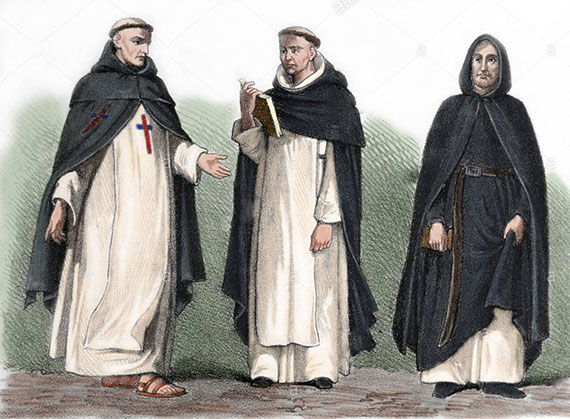Azadi ka Amrit Mahotsav Kolkata event honours four Clergymen
Pope Francis asks businesses to support working women: They’re ‘afraid to get pregnant’
Study: Christianity may lose majority, plurality status in U.S. by 2070
Indian politician declines Magsaysay Award under party pressure
Like John Paul II, Pope Francis heads to Kazakhstan during time of war

The emergence of Mendicant Orders in the Middle Ages signified a paradigm shift in the living out of consecrated life in the Church. From the third century, consecrated life was lived in monasteries. However, traditional monasticism began to be challenged by many, who advocated a new form of consecrated life, which came to be called vita apostolica, apostolic life, emphasizing voluntary poverty and wandering preaching, thus challenging the stability and security of traditional monasticism. Their ideal of consecrated life was no more the community of Acts 4:32, which monasticism saw as its model, but Jesus who moved from place to place with His disciples proclaiming the Kingdom of God. Because of their emphasis on poverty, they were also called “poverty movements.”
The Mendicant Orders originated from this tradition. In fact, they grew out of them and created a totally new concept of discipleship of Jesus and a radical breakaway from the monastic tradition of the past. By adopting the rule of corporate poverty and refusing to accept endowments or to own property, and by deciding to live by begging, they discarded elements that had long been regarded as indispensable to any organized community of monks. They also broke free from another important principle of traditional monasticism by abandoning seclusion to engage in active pastoral work. Preaching and ministering were their raison d’etre. The message was that salvation need no longer be sought by flight from the world nor is it reserved for a spiritual elite. The demands of Christian life could be fulfilled by sanctifying the humdrum duties and tasks of everyday life. The abandonment of stability and seclusion was essential for such a life. Two factors contributed to the success of this movement: one social and the other ecclesiastical.
The social factor was the development of urban life and the emergence of cities in Europe. This resulted in expansion of international trade and the rise of a new bourgeoisie, deriving its wealth from commerce, and the creation of a society that was more literate, mobile, critical, and affluent, at least at the upper levels. As can be expected, they provided the most fertile ground for anti-clericalism and religious dissent. Literacy was no more a clerical monopoly. They were very critical of monasticism. This urban population posed a pastoral challenge which the medieval Church was ill-equipped to meet. The Mendicant Orders by making the city the centre of their activity met the needs of these people. The friars who moved about preaching voluntary poverty and life according to the Gospel were listened to with admiration. Their preaching on poverty had credibility. They had no guaranteed income and security and they could speak of poverty with authority. In the urban society, they could beg to live or live on gifts and donations. This provided them the freedom to move about freely, ministering to the people.
The second factor was the new ecclesiology emerging based on the power of the Papacy, developed in the wake of the Gregorian Reform. The Mendicant Orders placed themselves at the service of the Pope and it helped them to integrate themselves into the Church and thus their ideal of poverty, unlike many of the poverty movements of the time which were viewed with suspicion by the Church, did not become a threat but a powerful help to the Church. The Church’s support gave them authority and status. They understood themselves also as belonging to the whole Church. The members coming from different countries belonged to the whole Church and to the whole Order and not to one community, like the monastic communities. This facilitated their mobility and mission, even outside Europe. Besides extensive faculties for preaching and hearing confessions and other sacramental activities, they were also actively involved in education, particularly in the newly founded Universities. Some of the intellectual giants of the Middle Ages belonged to the Mendicant Orders, like Bonaventure, Albert the Great, Thomas Aquinas, William of Ockham, etc. Both these activities also aroused much hostility among the bishops and the secular clergy and in the Universities. The dispute had to be settled finally by Pope Alexander IV in 1256 in favour of the Mendicants.
Leave a Comment